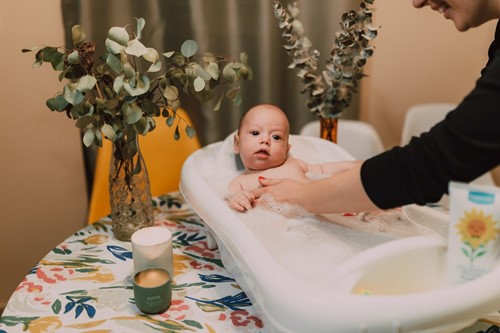Safe Baby Bathing: Tips and Best Practices
Welcoming a baby into the home is undeniably joyous, but it comes with its set of challenges. One of the first tasks that may seem daunting is ensuring a safe bathing routine. This isn't merely about cleanliness; it's a bonding moment requiring preparation and utmost care.

Some children love to be in the water, so daily bathing, using either baths or large stone bathtubs, will be both entertainment for them and a way to always stay clean and fresh.
Understanding Safe Bathing
What does it mean to have a safe bath? It's simple: both you and your little one should feel comfortable and secure throughout the process. With a plethora of bathing devices available today, you'll soon find out which one aligns with your needs.
Preparation Before Plunge
Before setting the scene, ensure:
- The bathing room is cosy, warm, and draught-free.
- Special, small bathtubs are best for bathing newborn babies – it minimises the amount of water you need to use and makes it easier for you to bathe them safely.
- The water is pleasantly warm (around 37°C). It's wise to use a specialised water thermometer, especially in the early days.
- Towel, nappy, baby wash, and other essentials are within arm's reach.
- You undress your baby right before the bath to avoid unnecessary chills. For the initial days, bathing them in a thin towel or diaper might help them adjust to the new sensation without feeling overwhelmed.
Bathing Basics
Begin gently, washing the face and hands, and then delicately submerge your baby's body into the water, watching their comfort. For the first few weeks, use a cotton pad for the face rather than your hand. Remember, while some babies revel in daily baths, it isn’t essential. Sometimes, a simple wipe-down works wonders.
Time matters. Whether it’s morning or evening, avoid bathing just after feeding or when they’re too hungry. Both scenarios might leave your baby fussy.
Safety is Paramount!
Even if the water is just about 5 cm deep, it's crucial to never leave your baby unattended. If you need to step away, even briefly, ensure you take your baby with you. Ears should be shielded from excessive water and soap, and if using a larger bathtub, be especially careful about water depth and always support your child.
Accessorising the Bath Time
The market today offers some nifty tools to make bathing more convenient. Consider special bath seats—they offer a free hand for washing, but ensure you're still supporting and monitoring your child. Bath mats are great for older babies who can sit; they prevent slips and provide an added layer of safety. However, remember: these tools are supplemental and cannot replace your watchful care.